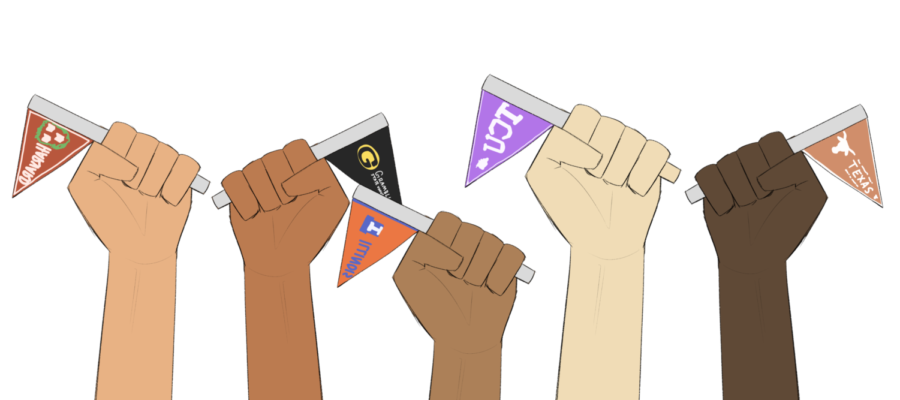University v. Diversity
Addressing the Supreme Court’s consideration to strike down affirmative action
Photo by Ayla Dean
photo illustration
April 11, 2023
The Supreme Court is the law of the land in the United States. It is arguable that there is no other institution that comes even close to matching the Court’s influence over American society to this day. Therefore, news about the Court’s consideration of striking down affirmative action has sparked widespread concern and controversy.
Affirmative action has been a cornerstone of the civil rights movement, especially highlighted in legislation, since the 1960s, and has been used to ensure that people of color, women and other marginalized groups have access to the same opportunities as their white, male counterparts. It is objectively a tool for creating a more equitable society and promoting diversity in the education system.
Affirmative action is defined as the practice of favoring individuals belonging to groups regarded as disadvantaged and can be traced back to Executive Order 10925, signed by President John F. Kennedy in 1961. The order established the concept of affirmative action and later the Civil Rights Act extended the concept of affirmative action to private employers, prohibiting employment discrimination based on race, color, religion, sex or national origin.
Time and time again, the Supreme Court has issued several landmark decisions that have shaped affirmative action policies in higher education, as well as impacted diversities in institutions all across the country. In Regents of the University of California v. Bakke (1978), the court held that universities may consider race as a factor in admissions decisions, but they may not use racial quotas. This decision recognized the importance of diversity in higher education and the need for affirmative action to promote it, but it also set limits on the use of race as a factor in admissions; the very idea many opponents of affirmative action tout today.
Moreover, research has shown that diverse learning environments have numerous benefits for all students. They improve critical thinking, promote creativity and innovation and prepare students for success in a global and diverse workforce. By promoting diversity and inclusion in higher education, affirmative action benefits not only minority students, but white students and the broader society as well.
In Grutter v. Bollinger (2003), the court reaffirmed the importance of diversity in higher education and held that the University of Michigan Law School’s use of race as one of several factors in admissions was constitutional. The court recognized the compelling interest in promoting diversity in education and society as a whole and held that the use of race as a factor in admissions was tailored to achieve that interest.
A more recent addition to this narrative is in Fisher v. University of Texas at Austin (2013), where the court upheld the use of race as a factor in admissions. These precedents demonstrate the critical role affirmative action plays in promoting diversity and inclusion in higher education. The Supreme Court’s decision to consider striking down affirmative action is a significant step backward for civil rights and equality.
The implications of this decision for minority groups are troubling at the least. The elimination of affirmative action would mean that students would be at a significant disadvantage in the college admissions process, perpetuating the cycle of inequality that has plagued our society for generations. Minority students have historically faced significant obstacles in accessing higher education, and affirmative action has been a critical tool in promoting equal access and opportunities.
Without affirmative action, universities would be less diverse, less inclusive and less reflective of the communities they serve. This would have significant consequences for society as a whole, limiting the opportunities available to marginalized groups and perpetuating the cycle of inequality.
The Supreme Court’s decision to consider striking down affirmative action is a clear indication that the Court is not interested in protecting the rights of marginalized groups and is instead more concerned with protecting the interests of the privileged. It sends a dangerous message that discrimination and inequality are acceptable in our society and undermines the progress that has been made towards creating a more just and equitable society.















